Jen Black's Blog, page 46
November 23, 2017
Church Services and odd facts
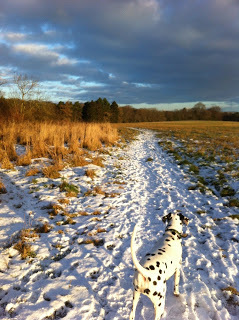 Whenever I think of church services it is usually when I'm writing, and usually in a time period not my own. In a word, the services are not familiar to me as they would be for my characters. Until clocks were invented for the masses, folk told the time by listening to the ringing of church bells for services that went on throughout the day and night. They would recognise the position of the sun in the sky and how close to sunset and sunrise the day might be much better than we do today. I suspect our ancestors had a very good sense of time, far better than ours now we rely in clocks so much.
Whenever I think of church services it is usually when I'm writing, and usually in a time period not my own. In a word, the services are not familiar to me as they would be for my characters. Until clocks were invented for the masses, folk told the time by listening to the ringing of church bells for services that went on throughout the day and night. They would recognise the position of the sun in the sky and how close to sunset and sunrise the day might be much better than we do today. I suspect our ancestors had a very good sense of time, far better than ours now we rely in clocks so much. Prime, sometimes called Lauds, is the first service of the day after sunrise, the first hour, around 6am. This is followed at regular intervals by Terce, the third hour, Sext, the sixth hour, None, the ninth hour,Vespers and Compline, Compline being at 7pm in the winter and 8pm in the summer. No doubt monks went to bed after Compline because they had to rise and attend Matins, sometimes called Vigils, two hours after midnight. Once that was over they might manage another three hours sleep before rising for Prime.
The population of the UK was very low back then. In 1066 the history folk say England had between 2-3 million people, Ireland under a million, Scotland and Wales little more than half a million. The plague years knocked those numbers back quite considerably during the 1300s and into the 1400s and it was some time before the population made up those numbers and then began to grow.
Published on November 23, 2017 02:43
November 16, 2017
A tribute to Dorothy Dunnett
Dorothy Dunnett OBE was a Scottish historical novelist best known for her six-part series about Francis Crawford of Lymond. Born in Dunfermline in 1923 she began writing when she could find nothing suitable to read and the first in the series of six was published in 1962 though I believe it was published earlier in America because it failed to find a publisher in the UK.I found Game of Kings on the library shelves while hunting for books for my mother. She gave it back to me saying “You should read this. You’ll like it.” Like it? I loved it! At 18, who could resist the dashing Scots mercenary, Francis Crawford of Lymond, who travelled to the French and English courts, and later became caught up in intrigues across 16th-century Europe? Not only that, but the other characters were glorious too, and they said things that stuck in my mind for years. The language was a delight, in places perhaps a little overdone for today’s tastes, but the dialogue was brilliant. I still re-read chunks now and then for the sheer pleasure of her style.I raced through the series and came to a dead halt at the end of book number four in the series, Pawn in Frankincense, in 1969. I discovered she lived in Edinburgh, wrote to her and still have her reply in which she assured me there would be two more volumes to complete the series.I worked in a library at the time and we gave the books to everyone we though would enjoy them. Eventually one of our ladies invited Dorothy to speak at Wilton Castle and it was there she told us of an American lady who had written 72 letters to her whilst reading the books. I volunteered to take the strain, Dorothy put the American lady and I in touch and we wrote to each other about the puzzles of the books for the next decade or so.One reviewer at the time called Francis Crawford a sixteenth century James Bond, but the stories were far more complex than any Bond story. Puzzles were linked throughout the books and only answered in the last volume, and even then there were loose ends. By the end of Game of Kings, Lymond had certainly proved his innocence against the charge of treason, but the reader was left with the far greater puzzle of his parenthood. By the end of Checkmate we thought we had all the answers, but then doubts began to creep in.Another series began – this time a prequel called The House of Niccolò. The first volume was published in 1986 and the hero was vastly different to the suave, elegant Francis Crawford. A dye maker’s apprentice, Niccolo lived in Bruges a whole century earlier. I think I still have the first galley copy without a cover or a spine that someone managed to obtain from the publisher, so desperate were we to read more Dunnett.
More puzzles and we had to wait yet more years for the answers. I don’t mean crossword puzzles, but puzzles of ancestry, of loyalty, of skulduggery. All this time Dorothy was writing a new Dolly book every spring – Dolly being a gaff rigged ketch and the home of artist Johnson Johnson who sailed the world investigating crimes. Then later still came King Hereafter, the book that some think her best work. Dorothy convinced me Thorfinn and MacBeth were the same person and though it was the hardest of all to read and understand, it pays re-reading and gives a huge insight into the minds of those who lived so long ago.
More puzzles and we had to wait yet more years for the answers. I don’t mean crossword puzzles, but puzzles of ancestry, of loyalty, of skulduggery. All this time Dorothy was writing a new Dolly book every spring – Dolly being a gaff rigged ketch and the home of artist Johnson Johnson who sailed the world investigating crimes. Then later still came King Hereafter, the book that some think her best work. Dorothy convinced me Thorfinn and MacBeth were the same person and though it was the hardest of all to read and understand, it pays re-reading and gives a huge insight into the minds of those who lived so long ago.
Published on November 16, 2017 01:28
November 12, 2017
Life in 1000 AD
 I've been reading up about life in 1000 AD because I'm writing about it as well as watching archaeological digs. One of the interesting facts to come out of archaeology is the skeletons of the time are always larger than expected and they have wonderful teeth; ground down with use on coarse foods, perhaps, but otherwise healthy.
I've been reading up about life in 1000 AD because I'm writing about it as well as watching archaeological digs. One of the interesting facts to come out of archaeology is the skeletons of the time are always larger than expected and they have wonderful teeth; ground down with use on coarse foods, perhaps, but otherwise healthy. Life was shorter then. The life span was forty, and those who reached fifty exceptional. For men the cause of death was often violent - war, and if not instant death then death from battle wounds.
Not that everyday activities in the home were always safe; a harmless cut from a slipped gutting knife could end in death because blood poisoning could set in and there was nothing to combat it back then.
Everyone worked hard, famine was not unknown and sometimes a family had to sell a child.
Too much rain could rot the crop in the fields, and frost at the wrong time could spell disaster. If a family's feudal lord could not provide, then starvation was all too likely. Hedgrows would be scoured for herbs, roots, grasses, nettles - anything that could be eaten.
A twelve year old boy could swear an oath of allegiance to the king and a girl of the same age could marry a much older man than herself. Consummation was usually delayed until the girl was in her teens, but not always. Since the contract of marriage was all about land, estates, property among the richer folk, what would it have been about for the poorer families?
Girls would have been married off as soon as someone willing to take them on could be found, because it would mean one less mouth to feed for her family. Or she could go and work as a maid in a larger household and hope she was well fed.
Men who sought wives presumably had the means to feed them, which meant they would be older than the girls. Young men would have to work until they had somewhere to live and
something to offer a wife. This went on right up into living memory. It is not unusual to find our parents and grandparents listed in the census reports as "servant" in a family with a different name to them right up to the thirties and forties.
Published on November 12, 2017 17:00
November 11, 2017
How things change
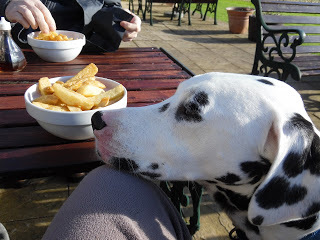 Around the year 1000 things were very different. Archaeologists who sift through latrine pits and peer down microscopes tell us that the toilet paper of that time was moss. They report that human stools were looser then, probably due to the higher vegetable content - and the fact that gut infections were most likely rampant. Dog poo, on the other hand, hasn't changed much in a thousand years.
Around the year 1000 things were very different. Archaeologists who sift through latrine pits and peer down microscopes tell us that the toilet paper of that time was moss. They report that human stools were looser then, probably due to the higher vegetable content - and the fact that gut infections were most likely rampant. Dog poo, on the other hand, hasn't changed much in a thousand years.Latrines were sited close to the houses with total disregard for the attendant flies and odours, often only metres from where food was prepared. Parasites were common, probably due to the fact that five baths a year was considered excessive by the Anglo-Saxon population. Danish invaders were thought extreme when they bathed and combed their hair every Saturday night.
Even the Danes had no idea of germs, bacteria and infections but everyone knew that diseases spread from one person to another, hence the horror of leprosy. Bread, that staple of the diet, was often a week old when eaten and required to be softened by dipping it in the grain and vegetable broth that was the staple of the Englishman's diet. Everything was eaten, down to the spines of fish and apple pips and cherry stones. No food wastage in the 10th century, though given that the methods of storage available - things could be dried, smoked, pickled - many foods must have been well past their best, possibly spoilt or contaminated. Which brings us back to the contents of the latrine pit....
Published on November 11, 2017 02:19
November 3, 2017
Titles
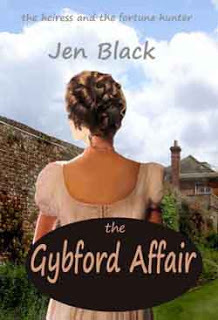 Do other authors look at the titles they have written and wonder why one book is more popular than another? Ask themselves why their books are read in the US so much more than in the UK? I remember saying a while ago that Fair Border Bride was my most consistent seller but that has been overtaken by The Gybford Affair. Why? I have no idea. Sometimes I think about replicating it!
Do other authors look at the titles they have written and wonder why one book is more popular than another? Ask themselves why their books are read in the US so much more than in the UK? I remember saying a while ago that Fair Border Bride was my most consistent seller but that has been overtaken by The Gybford Affair. Why? I have no idea. Sometimes I think about replicating it!
Published on November 03, 2017 02:51
October 31, 2017
Out and about
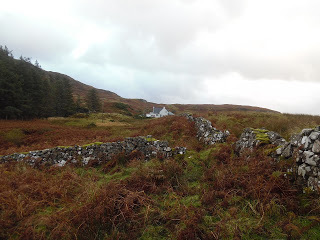 We didn't venture far while we were on Skye. We went to Dunvegan village a couple of time to pick up supplies at the general store and passed several soaked walkers on the way. They couldn't have got any wetter! and, as you might expect, they looked thoroughly miserable.
We didn't venture far while we were on Skye. We went to Dunvegan village a couple of time to pick up supplies at the general store and passed several soaked walkers on the way. They couldn't have got any wetter! and, as you might expect, they looked thoroughly miserable.Decided that if we were to walk anywhere I would pick the time very carefully. I always check maps before I set off anywhere and decided an unfenced track across open land would take me to the sea coast. We set off, all three of us, one in huge excitement and pulling like a train on his lead because of all the new smells. We got half a mile down the road, turned off to the gate and there was the dreaded notice. Dogs on leads or will be shot. Disappointment all round. Tim wasn't on his muzzle head collar, so walking him for three miles on a lead was unthinkable. We turned around, came back home and explored the hillside behind the house. Didn't matter to Tim - he loved it. At least we still had arms attached to sockets and we had splendid views out across the bay.
Published on October 31, 2017 03:41
October 28, 2017
A week in the west
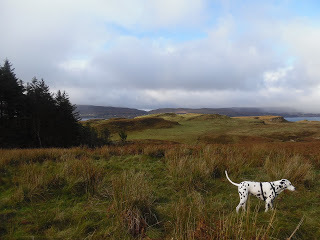 Came home early from a week on the Isle of Skye. Caved in the relentless rain and 40-50 mph winds that moaned and howled around the house. We did have snatches of time when it was not raining and hurried out to enjoy our surroundings and take a few pics. Tim had to be walked, of course, regardless of the weather and our day began with me walking him the 400 yards down the curving track to the rubbish bins situated at the junction with the single track road.
Came home early from a week on the Isle of Skye. Caved in the relentless rain and 40-50 mph winds that moaned and howled around the house. We did have snatches of time when it was not raining and hurried out to enjoy our surroundings and take a few pics. Tim had to be walked, of course, regardless of the weather and our day began with me walking him the 400 yards down the curving track to the rubbish bins situated at the junction with the single track road.The track was unfenced with woods on one side and a hillside on the other, so he galloped around
freely until we neared the road. Once I'd deposited our rubbish we headed back, and then if it wasn't pouring down, we ventured off-piste as it were and scrambled around the open land around the house. Little tracks led every which way through the knee high tussocks and bracken, possibly rabbit or deer tracks - we surprised two deer sheltering in the wood one morning and they scampered away, leapt the fence and set off across the hillside with the lovely level stride the red deer have.
Then the mist would sweep across from the far headland, thicken and the rain would start again. We learned to anticipate how fast the clouds were coming and usually made it back home before we got drenched. A great way to start the day. Then a quiet hour or two with the laptop and the wip until the rain disappeared and the sun came out again. Then all three of us would venture out and clamber up the hillside.
Published on October 28, 2017 04:16
October 20, 2017
Disturbing tv
A lot of what I see on tv disturbs me.
 What sort of things am I thinking of?
What sort of things am I thinking of?
So many comedians who are not funny.
So called “Celebrities” who vie with each other to wear the least clothing in public and then put the photograph on social media.
Reality programmes that use nastiness of one kind or another to grab an audience.
The way the media leads the public into thinking what they say is news when it is so often prefaced by the phrase “We understand that….we are told that…we think that…”
The way someone’s views are routinely shouted down, mocked, talked over or cut off in most tv interviews these days. The way interviewers ask questions that politicians can’t answer; politicians who won’t answer even if they can.
The cowardly people who use Twitter to annoy, vilify and abuse others.
Dramas, films and soaps where people are horribly tortured, mutilated, beated and raped.
The obscene amount of money that is bandied around in football and most other sports today.
Advertising on tv – and anywhere, for that matter - that tempts people into gambling.
The focus on food adverts and cookery programmes when a good percentage of the nation is already obese.
The endless cookery competitions where food is wasted and living creatures are killed – there will be a dearth of lobsters soon since so many are used in cookery competitions.
Blogger thinking I have spelling errors when I am using British English!
 What sort of things am I thinking of?
What sort of things am I thinking of?So many comedians who are not funny.
So called “Celebrities” who vie with each other to wear the least clothing in public and then put the photograph on social media.
Reality programmes that use nastiness of one kind or another to grab an audience.
The way the media leads the public into thinking what they say is news when it is so often prefaced by the phrase “We understand that….we are told that…we think that…”
The way someone’s views are routinely shouted down, mocked, talked over or cut off in most tv interviews these days. The way interviewers ask questions that politicians can’t answer; politicians who won’t answer even if they can.
The cowardly people who use Twitter to annoy, vilify and abuse others.
Dramas, films and soaps where people are horribly tortured, mutilated, beated and raped.
The obscene amount of money that is bandied around in football and most other sports today.
Advertising on tv – and anywhere, for that matter - that tempts people into gambling.
The focus on food adverts and cookery programmes when a good percentage of the nation is already obese.
The endless cookery competitions where food is wasted and living creatures are killed – there will be a dearth of lobsters soon since so many are used in cookery competitions.
Blogger thinking I have spelling errors when I am using British English!
Published on October 20, 2017 03:23
October 18, 2017
Book Covers
Received my first review for Alba is Mine -
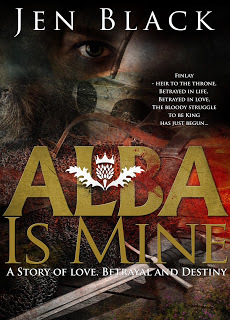
Vasiliki said on 14th October:
"I didn't know what to expect when I bought this book, and I got a really pleasant surprise. It's packed full of detail with finely drawn, likeable characters and loads of intrigue. The world building/historical detail and description seem to me to be well researched and accurate (I covered a tiny bit of this era during my degree in Archaeology) but the author does not overdo it, keeping a light touch so that the story doesn't get bogged down with it. The writing is very good, and it is well edited so the reader isn't distracted by errors. Overall a very good read, that packs a lot in for the price."
All authors love to get reviews and I'm no exception. This one brightened my day and spurred me on with the writing of my next book. Here's hoping I get many more!
For a little amusement (and because I can't bare to delete them usused!) this is a cover I played around for a while before deciding to ask the very talented Dave Slaney to do a cover for me. His is so obviously better! I used to play arpund with ideas for a cover when I had reached a point in writing or editing when my eyes, or my brain, or both - had begun to glaze over. It was therapeutic but eventually frustrating because I did not have the expertise to get the effect I wanted. I see I even misspelled my own title!
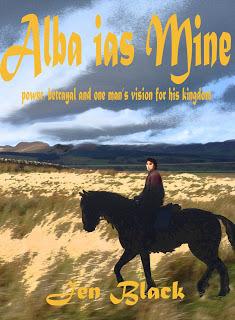
Using different colours and fonts can make or break a cover, and it is an absorbing process. Some colours fade back, other leap forward. Some fonts are just too - what's the opposite of plain? Beautiful hardly seems the correct word here. Mixing fonts and colours is just a no-no and that shows up well here in my two covers.
I get the urge to go and take a class in graphic art, but then it all gets too complicated - no where local offers such things but the universities and they are so expensive that the idea just fades away.

No doubt I'll keep tinkering and trying and learning bit by bit.
I'd really like to know how to fade layers into one another to make a wonderfully sophisticated cover like Dave Slaney.
If I was starting my life over again, I might have chosen to do graphic art at university.
It's a bit late now!

Vasiliki said on 14th October:
"I didn't know what to expect when I bought this book, and I got a really pleasant surprise. It's packed full of detail with finely drawn, likeable characters and loads of intrigue. The world building/historical detail and description seem to me to be well researched and accurate (I covered a tiny bit of this era during my degree in Archaeology) but the author does not overdo it, keeping a light touch so that the story doesn't get bogged down with it. The writing is very good, and it is well edited so the reader isn't distracted by errors. Overall a very good read, that packs a lot in for the price."
All authors love to get reviews and I'm no exception. This one brightened my day and spurred me on with the writing of my next book. Here's hoping I get many more!
For a little amusement (and because I can't bare to delete them usused!) this is a cover I played around for a while before deciding to ask the very talented Dave Slaney to do a cover for me. His is so obviously better! I used to play arpund with ideas for a cover when I had reached a point in writing or editing when my eyes, or my brain, or both - had begun to glaze over. It was therapeutic but eventually frustrating because I did not have the expertise to get the effect I wanted. I see I even misspelled my own title!

Using different colours and fonts can make or break a cover, and it is an absorbing process. Some colours fade back, other leap forward. Some fonts are just too - what's the opposite of plain? Beautiful hardly seems the correct word here. Mixing fonts and colours is just a no-no and that shows up well here in my two covers.
I get the urge to go and take a class in graphic art, but then it all gets too complicated - no where local offers such things but the universities and they are so expensive that the idea just fades away.

No doubt I'll keep tinkering and trying and learning bit by bit.
I'd really like to know how to fade layers into one another to make a wonderfully sophisticated cover like Dave Slaney.
If I was starting my life over again, I might have chosen to do graphic art at university.
It's a bit late now!
Published on October 18, 2017 04:04
October 14, 2017
Location, location, location
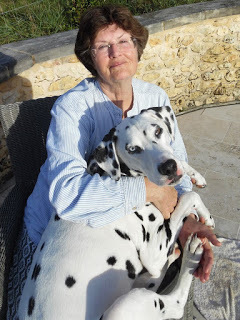
I like researching locations for my stories. Contemporary stories in a foreign location are easily researched with tour guides, travel books and all the resources of the internet, but set the story in the past, and it’s a little bit harder to visualise. Georgian, Victorian and Edwardian locations are not too hard here in England as many of the streets and buildings are still extant, but when I made a 4 day trip to Dublin and found that the street I had set my heroine’s home on was still there I was surprised and delighted that I could walk up and down it. Why was I surprised? Because I had set my story in the eleventh century – almost a thousand years ago. (The fact that the street looked nothing like the scene I had envisaged didn’t spoil things for me. There might be fairly ordinary brick buildings there now, but the shape of the street was the same, I could see how steep it was, whether I could see the river or the sea from there, and it led to the cathedral that was being built at the time.)
Dublin was a famous Viking stronghold and an ancient settlement even when the Vikings arrived, so maps of the place in those days were easy to find online and print out thanks to archaeological studies. I could really get to know the layout of the Viking town from the maps and they showed the development from the earliest settlement to the 1200s, which covered my period of interest. Visiting the place showed me how narrow the river is now compared to how much shallower and wider it had once been before Lord Sitric confined it and reclaimed what had been swampy, tidal land.
Setting Far After Gold in the north west of Scotland was both better, because I had spent many holidays there, and worse because there wasn’t an equivalent large settlement like Dublin. http://www.ullapool.com/ullapool-history is a starting point for the history of the area and the latest large scale maps show where the settlements and brochs, rivers and fords once were and still are. I could describe the landscape because I’d seen it, as long as I made allowances for the changes that have taken place. Forests were much larger around the eleventh century and land was undrained and often swampy. Fords and known tracks were important for travellers and travel by sea was deemed much easier than travel overland. I had experienced the weather of the north west in the summer months and late October, early November; research told me which animals once lived there. We no longer have wolves in Scotland, but wolves and bears were certainly present back then.
Orkney is another of those places where research pays dividends. I’ve never been, but archaeology provides a great deal of information about dwellings, artefacts used, crops grown and where settlements were. Google Earth is fantastic for giving an author a feeling for the size of a place and the geography around it. The satellite imagery will give a very good idea of where you might beach a ship or find a way through the mountains and contour lines of maps will suggest whether you might end up in a bog or fall over a cliff face.
I discovered a fabulous website for maps held at the National Library of Scotland: http://maps.nls.uk/towns/ and used it for the two historical novels set in Edinburgh and Stirling during the mid 1540s. The magnification on most of them allowed me to see individual buildings on the old High Street most clearly.
I used all of these techniques in writing ALBA IS MINE, released 1st October 2017. Here’s the blurb:
In 1034, the fuse has been lit that will change the kingship of Alba. When his place in the succession is rejected, Finlay of Moray rebels against his grandfather the king and sides with half-brother Thorfinn of Orkney.
With his intended bride married off to his cousin, his boyhood friend joining the opposing side and the threat of war looming, there is little happiness for Finlay. Wanting to cement the bond between them, Thorfinn badgers him to marry his beautiful sister, but Finlay, reluctant to abandon hope of his first love, grimly resists the idea.
This absorbing, fast moving tale of power, greed, family rivalries and one man's vision of the future for his troubled kingdom will keep you turning the pages into the wee small hours.
https://tinyurl.com/ycyymrmq (US)https://tinyurl.com/ybq33rgp (UK)
ALBA IS MINE Kindle Edition $3.11
by JEN BLACK
Jen has always lived in the North East of England and currently resides in the lovely Tyne valley between Hexham and Newcastle. On a clear day she can see across Northumberland to the hills where the border with Scotland runs, and the beautiful unspoilt coastline is barely thirty minutes away by car. She has a degree in English Language & Literature and a great love of history, her dog Tim and takes pics wherever she goes. With several book titles to her credit she is now working on EILIDH AND THE VIKING. See her blog at http://jenblackauthor.blogspot.com find her on Twitter at JenBlackNCL.
I wrote this for the http://www.editingpen.net/researching-locations-jen-black/ It went out this week and I was pleased with the result.
Published on October 14, 2017 06:35
Jen Black's Blog
- Jen Black's profile
- 6 followers
Jen Black isn't a Goodreads Author
(yet),
but they
do have a blog,
so here are some recent posts imported from
their feed.



